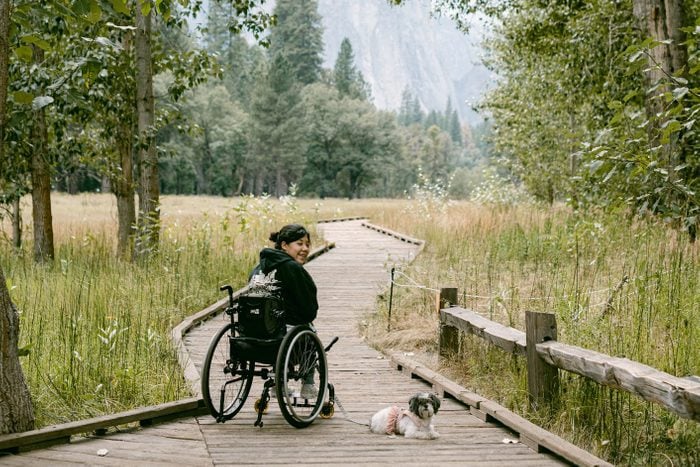
America’s most accessible national parks
On a recent trip to Maui, the officer at Haleakalā National Park surprised our family by inquiring if anyone in the car had a permanent disability. We knew that active military personnel and veterans could get free park passes, but we had no idea our 15-year-old son was eligible for a lifetime Access Pass because he has autism. Haleakalā isn’t even one of the most accessible national parks in the country, yet this was a major accessibility win.
After filling out the paperwork, we drove to the volcano’s summit. Our outer-space-obsessed teen appreciated the park’s stark moonscape and the giant telescopes that allow visitors to observe the heavens free from light pollution. A few days later, we hiked the Pipiwai Trail from the park’s remote Kīpahulu entrance on Maui’s lush southeast side. We trekked past surging waterfalls and through a mesmerizing bamboo forest, where we listened as the wind knocked together the hollow culms to create a calming staccato best described as nature’s music therapy.
Between flights and crowds, traveling with a disability can be fraught, so we appreciated our seamless visit to one of Maui’s top attractions. Haleakalā was definitely a highlight of our holiday.
Why should you spend time in nature?
My husband and I are big fans of road-tripping to national parks, and we have also taken our kids to Death Valley, Yellowstone, Zion and the Grand Canyon. Our son loves to hike and spend time outdoors, and immersing in nature has been shown to help individuals on the autism spectrum focus and self-regulate.
It’s not just the neurodiverse who benefit, though—nature is a balm for everyone. Exposure to fresh air, sunshine and natural landscapes helps reduce stress and lower blood pressure. And spending time in the great outdoors imparts physical, mental and social health benefits for those with mobility challenges too.
What makes a national park accessible?
Beyond providing free entry, national parks, preserves and historic sites managed by the National Park Service are committed to becoming more accessible to visitors with a range of disabilities.
“When people think about accessibility in the park service, they think about people in wheelchairs who can go down trails. It’s a lot bigger than that,” says Jeremy Buzzell, manager of the Park Accessibility for Visitors and Employees Program with the National Park Service. “It’s how we’re making it accessible to people who are blind, hearing impaired, with intellectual disabilities. What we want to do is remove as many barriers as we can.”
Many parks offer downloadable accessibility guides that list wheelchair-friendly trails and accessible amenities such as campgrounds and bathrooms. Quite a few parks also offer American Sign Language (ASL) interpretation for ranger-led programs (with advanced request) and braille signage or tactile maps along popular interpretive trails. But more and more, parks are also addressing invisible disabilities, such as autism, by providing tools like sensory guides and social stories that help families plan ahead. We took all that into consideration when coming up with this list of the top national parks for accessibility.
Keen to commune with nature this summer? Here are eight of the most accessible national parks.
Get Reader’s Digest’s Read Up newsletter for more travel, humor, cleaning, tech and fun facts all week long.
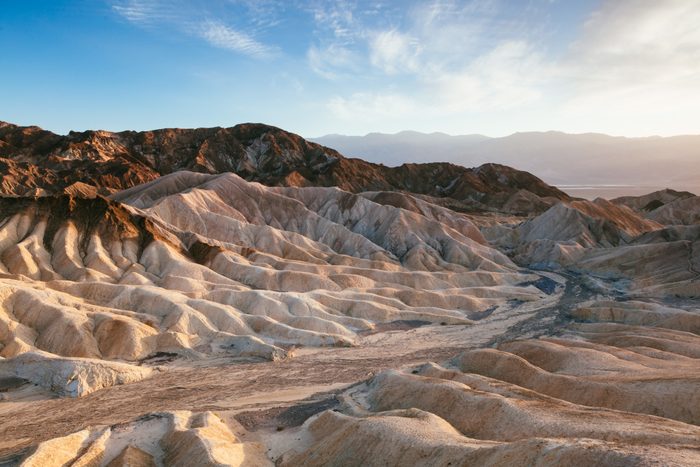
Death Valley National Park
Our son, a sensory seeker, didn’t seem to mind the sand filling his shoes at Mesquite Flat Sand Dunes, nor did he balk at the wind howling across the parched salt flat at Badwater Basin, the lowest-elevation point in North America. But Death Valley’s extremes, including heat, can be challenging for some visitors, which is why this national park recently implemented extra support for those with sensory sensitivities.
“One of our main jobs is to help visitors experience Death Valley safely, so our goal is to provide an accessible experience for all of our visitors, including those with cognitive and/or learning disabilities,” says accessibility coordinator Kimberly Selinske.
The California park provides an online accessibility guide that includes links to social stories, which help prepare travelers for a visit to the park, as well as a sensory guide that rates park attractions from one (low sensory) to ten (high sensory) in the areas of touch, taste, sound, sight and smell. Families can also borrow a sensory kit at the Furnace Creek Visitor Center or Stovepipe Wells Ranger Station to get access to polarized sunglasses, noise-canceling headphones, fidget toys and a cooling towel and squirt bottle, all tools to help manage the elements.
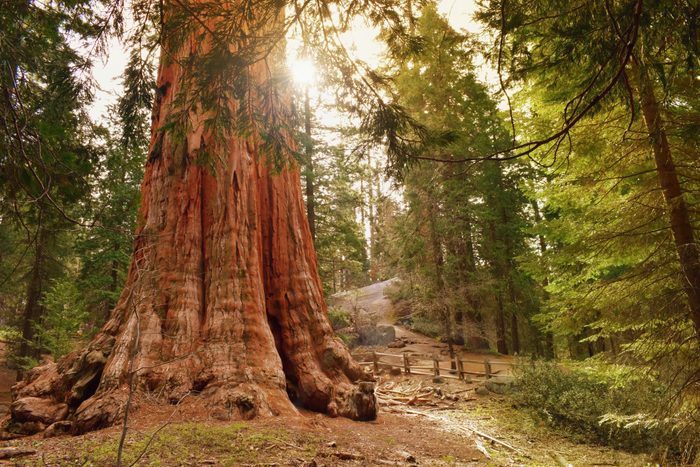
Sequoia and Kings Canyon National Parks
These neighboring California parks just rolled out an accessibility film series that shows prospective visitors with mobility, vision or hearing challenges the many ways they can enjoy the park. Paved trails lead to the famous General Sherman and General Grant sequoias, most campgrounds have accessible campsites and wheelchairs are available for loan on a first-come, first-served basis. The park’s shuttle service is wheelchair accessible too.
What’s more, nearby Visalia recently became a Certified Autism Destination, so park visitors with a family member on the spectrum can base themselves at one of the city’s autism-certified hotels, where staff have been trained to better serve those with sensory needs. While you’re at it, also check out these amazing autism-friendly resorts that are equipped to give you the best vacation.
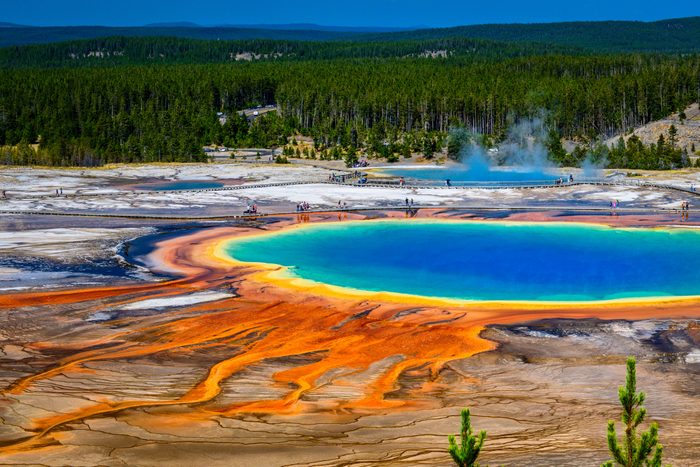
Yellowstone National Park
With a geyser that erupts faithfully almost every hour, plus colorful hot springs, steaming vents and photo-worthy wildlife (including bison on view just outside the car), Yellowstone was a major win for our family. My son loved the park’s many sensations … except that stinky sulfur smell.
Visitors can see a lot of the park—from towering mountains to herds of elk—simply by driving through. That alone is a boon for those with mobility challenges. But on top of that, many of the pathways and boardwalks to see the geothermal wonders are navigable in a wheelchair. In fact, AgingInPlace, an online resource for older adults, ranked Yellowstone third on its list of the most accessible national parks, thanks to its number of wheelchair-friendly trails and restaurants.
Other accessibility features put the multi-state park—it’s located primarily in Wyoming but reaches into Montana and Idaho too—ahead of the pack. It offers ASL interpreters for ranger programs, captioning and assistive listening for films at select visitor centers and audio-described park guides, plus both large-print and braille versions of the map and guide for low-vision travelers.
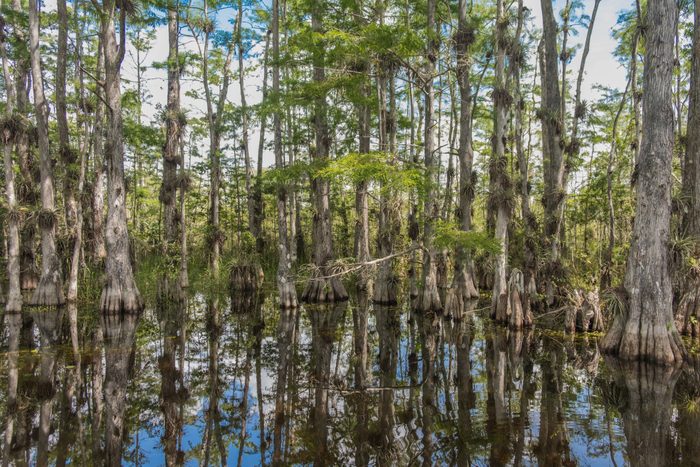
Big Thicket National Preserve
This national preserve in southeastern Texas boasts pine forests, bogs with carnivorous plants and shady bayous, plus a number of tools to help visitors with sensory, mobility or other challenges have a successful time exploring the unique environment.
Visitors can borrow a Velcro task board to create a visual schedule for a day at the park that includes activities and points of interest. There’s also an online social story that prepares hikers for what they might encounter on the trails, including bugs, animals and plants. To help manage sensitivities, sensory kits with noise-reduction headphones, sunglasses and textured fidget toys are available for loan at the front desk.
People who use wheelchairs or have mobility challenges can rely on two trails (Sundew and Pitcher Plant) that feature a mix of pavement and wooden boardwalks. And with advance notice, those who are deaf or hard of hearing can request an assisted listening device or ASL interpreter for their trip. Have a service dog? Good news: It’s allowed to go anywhere you do.
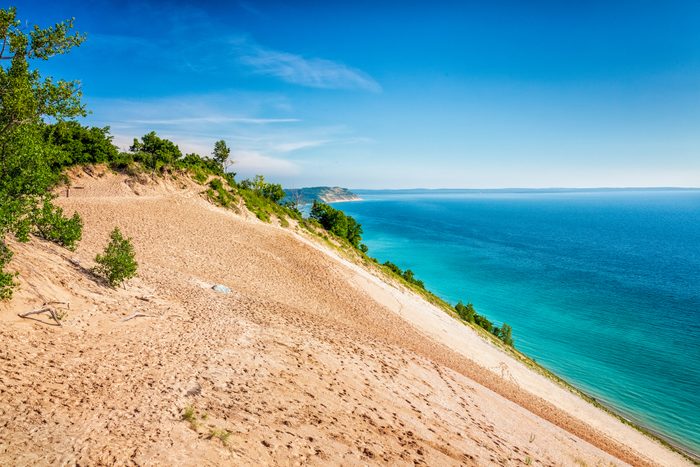
Sleeping Bear Dunes National Lakeshore
Most wheelchairs require flat trails and a person to push the occupant. But at this national lakeshore park in Michigan, wheelchair users can tackle more rugged terrain, like sandy beaches or root-bound forest trails, thanks to three power track chairs that have tank treads instead of wheels.
“The [track chairs] … enable individuals with mobility issues to be out in nature hiking on a trail through the woods, taking in a view from an overlook and enjoying our beaches, which in many cases they have never been able to do before,” says Kathy Tuckerman, track chair co-program manager with Friends of Sleeping Bear Dunes.
The volunteer organization funds and manages the track chair program between May and September. Park visitors can reserve a chair in advance, and an on-site volunteer helps them adjust the headrest and seat belt, and then walks with them on a hike. Another reason Sleeping Bear Dunes made our list of the most accessible national parks? The park also offers support for visitors with deafness or hearing loss, or those with blindness or low vision.
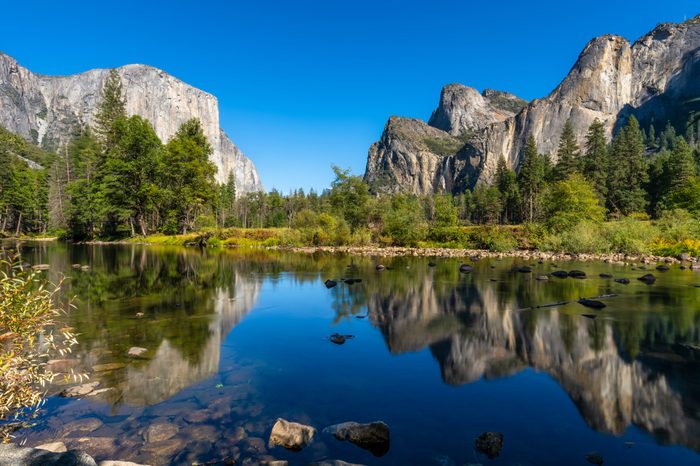
Yosemite National Park
Made famous by Ansel Adams’s black-and-white photographs of its towering granite rock faces, crashing waterfalls and giant sequoia trees, the enchanting California wilderness of Yosemite beckons nearly 4 million visitors annually. But here’s something you need to know about this national park: It’s committed to making its rugged beauty more accessible, with an extensive deaf services program and top attractions like Mariposa Grove, which include wheelchair-friendly trails. Bridalveil Fall is also undergoing a rehabilitation project that will include a wheelchair-accessible path and viewing area.
What’s more, visitors with mobility challenges can ask for a temporary disability placard for their vehicle to gain entry to roads that are otherwise closed to traffic, such as the access road to the Grizzly Giant, the oldest sequoia tree in Mariposa Grove.
“It’s one of the ways we can accommodate people,” says Buzzell. “We encourage people to contact the park ahead of time and tell them what your needs are, and work with them on solving problems.”
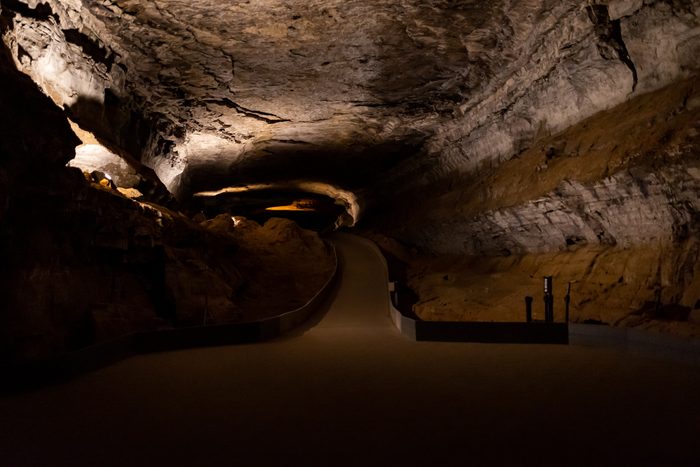
Mammoth Cave National Park
You don’t have to be Indiana Jones to explore the world’s longest-known cave system, a network of limestone caverns and tunnels in Kentucky. Mammoth Cave offers an accessible tour that takes visitors in wheelchairs, scooters or other assistive devices down into the cave via an elevator to see spectacular geological formations, like stalactites and stalagmites. Blind or low-vision visitors can experience the cave through an audio version of the cave tour.
Mammoth Cave also prepares travelers with cognitive or intellectual disabilities for what they can expect underground, such as total darkness during a lights-out experience or claustrophobia inside a dark, crowded space.

Great Sand Dunes National Park and Preserve
Sand is a huge barrier to accessibility, which is why this national park in Colorado lets visitors reserve balloon-tire wheelchairs to explore its namesake sandy hills. The chairs are not powered, so riders need a strong helper to push them through the dry sand in many parts of the park (the firm, wet sand along Medano Creek requires less effort).
Wheelchair users and visitors with low mobility can also take advantage of the park’s free ranger programs, including regular nighttime talks about stars (Great Sand Dunes is famous for its dark sky) that take place in the accessible amphitheater. If stargazing is your favorite camping activity, don’t miss this.
About the experts
- Jeremy Buzzell is the manager of the Park Accessibility for Visitors and Employees Program with the National Park Service.
- Kimberly Selinske is the accessibility coordinator for Death Valley National Park.
- Kathy Tuckerman is the track chair co-program manager with Friends of Sleeping Bear Dunes.
Sources:
- NPS: “America the Beautiful-The National Parks and Federal Recreational Lands Access Pass”
- University of Nebraska: “The Effect of Outdoor Environment on Attention and Self-Regulation Behaviors on a Child with Autism”
- International Journal of Environmental Research and Public Health: “Health-Promoting Nature Access for People with Mobility Impairments: A Systematic Review”
- NPS: “Our Commitment to Accessibility”
- Visit Visalia: “Local Certified Autism Centers”
- NPS: “Big Thicket National Preserve Accessibility”
- Aging in Place: “Accessible Adventures”
- NPS: “Yellowstone National Park Accessibility”
- NPS: “Sleeping Bear Dunes National Lakeshore Accessibility”
- NPS: “Yosemite National Park Accessibility”
- NPS: “Bridalveil Fall Rehabilitation Project”
- NPS: “Mammoth Cave National Park Accessibility”
- NPS: “Mammoth Cave National Park Cave Tours”
- NPS: “Great Sand Dunes National Park and Preserve Accessibility”
- NPS: “Great Sand Dunes National Park and Preserve Ranger Programs”
